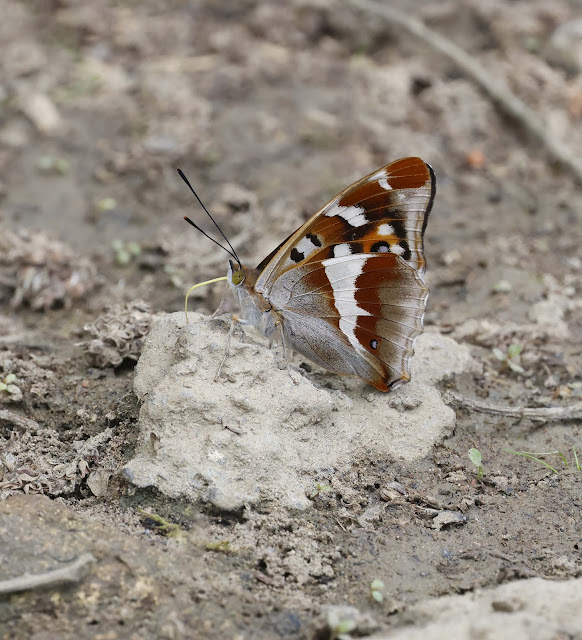The Purple Emperor flight season commenced in Bernwood Forest at the beginning of this week, will last but six weeks and be all over by the end of July. Consequently for acolytes such as myself the next few weeks will be dominated by excitement and anticipation as I go seeking as many opportunities as possible to make contact with His Excellency.
Why does this butterfly engender such fascination, interest, and yes I admit, desire within me? I can do no better than answer by quoting Matthew Oates who probably knows more about this majestic butterfly than anyone currently alive today. He writes as follows:
The male Purple Emperor does beauty big time,and he knows it.He does not only use it to seduce, to win over coy females,but also to vanquish rival males.His shimmering iridescent hues render the Purple Emeperor Britain's lone tropical-looking butterfly.Depending on the angle of view and the angle of the light, a single flick of his wings can take the observer through a spectrum from dense black through Tyrian purple, royal blue and several hues of turquoise and back ................. But we only see the Emperor's colours on the rare and brief occcasions when he descends to the woodland floor, usually to feed on something foul, and perchance to bask briefly nearby.That juxtaposition, of exquisite butterfly on a canine deposit (or worse) is a mighty metaphor for our relationship with beauty and with nature.
So no surprises that I returned to Bernwood today looking for further encounters with his Purple Majesty. Incidentally it is only the males who show the purple iridescence on their upper wings, the females are dark brown but do have similar white markings on their wings
I returned to the same ride where I had success two days ago full of optimism but I should have known better. It is rarely that easy. Never the same from one day to the next. This time the weather, although warm and humid was for the first part of the morning lacking in sun. Whether this contributed to the distinct absence of an Emperor I could not say although probably it did but then they are so capricious and cantankerous it could be for a host of other reasons. Such are the trials and tribulations of finding an Emperor but that is also the lure, the challenge of seeking him out, for when success finally comes your way (and it often does not) it is all the sweeter.
I lingered along the ride for two hours but there was not even an intimation of His Majesty being present.I regularly scanned the tops of the oaks where Emperors spend most of their life but there was no sign of one flying up there either. Other enthusiasts came and went and we exchanged commiserations and general chat. I learned that an Emperor had been seen in the forest's main car park earlier.There is always the temptation to abandon one's current spot and hurry to where one has been reported but it's pointless as the butterfly will usually be long gone and anyway I was rather partial to this ride and its quiet, rural ambience, so different to the constant coming and going of cars, people and dogs in the main car park and the well used track leading from it.
By mid morning the sun had begun to assert itself through the thin veil of cloud and my hopes rose.Would the Purple Enigma put in an appearance now?.The answer was no, however a male Silver washed Fritillary deigned to cease its customary madcap charging through the trees and settled to nectar on a bramble. Obviously fresh he flexed his orange wings as he fed but then was off again on his ceaseless mission to find a mate
 |
| Silver washed Fritillary |
Two and half hours passed with nothing to show for my vigil. A fellow enthusiast came up the ride heading back to the car park and enquired if I had seen a White Admiral. I told him no and suggested he try the cross roads at the main track.He went on his way and a minute later a White Admiral glided through the trees but did not stop. That's butterflying for you.
I too decided to make a move and opted to follow the same route and walk to the main car park and then return to the ride to make my way back to my car, parked at the far end of the meadows.
Any thoughts of seeing and photographing an Emperor on the ground were long since abandoned. Just to see one, if only in passing was now what I was reduced to. Anything!
Walking along the narrow track which runs between my favoured ride and the main track I saw the person who had passed me earlier pointing a camera at the ground. I was not particularly concerned, for as far as I knew Emperors have never been seen here as the surrounding trees are mainly birch with perhaps the occasional oak. I was wrong of course. As I approached closer he turned towards me and pointed as the unmistakeable profile of an Emperor flew down the track towards me at speed. There was just time for my brain to catch up with reality and my eyes to register a flash of purple and white before he powered past and flew further down the track beyond, where I lost sight of him.
Well my wish had been granted.I had seen an Emperor, if only in a brief flight view and that after almost three hours. I retraced my steps along the track in the hope it may have landed further on but predictably there was to be no happy ending.So close. So very frustrating.
I returned to the end of the track where it joined the main track and encountered my friend again.Standing by some trees and bushes and again pointing his camera at something.
Is this another Emperor? he enquired
He pointed to a leaf on a low branch on which sat a large brown butterly with two prominent white bands across its open wings.
For a moment but only a moment my heart gave a leap before it became obvious it was a White Admiral, newly emerged and in absolutely pristine condition. Under normal circumstances I would be really pleased with such an encounter but it was nullified by my overwhelming desire to see an Emperor,. especially having come so close just minutes ago. Second best simply would not do!
Nonetheless we took the opportunity to take some photos of the butterfly and very nice it was too, posing perfectly before glding away in its inimitable, buoyant and graceful manner through the trees.
Chatting to my erstwhile friend he told me he was from Manchester and had come down specially for the day, was new to butterflying and his desire was to see a Purple Emperor and a White Admiral, both of which would be new for him and in the space of a few minutes he had achieved his ambition! I smiled graciously and congratulated him whilst inwardly wanting to scream in frustration.
He told me the Emperor had been feeding on the path and he showed me his photos.It was sheer luck but that is often the way. You have to be in the right place at the right time and there is no way to legislate for such things and Bernwood Forest is a big place.
 |
| White Admiral |
We parted at the cross roads and I made my way back to my favourite ride planning to carry on across the meadows back to my car .It was now very hot and humid, the sun was beating down and my legs and feet ached from constant standing, the camera and lens feeling like a ton weight around my shoulder.
There was one last faint hope of an Emperor being along the ride on my return but of course it wasn't.I got to the gate that led into the meadow which would take me to my car and then maybe a stop at a country pub for a long cold glass of shandy.Wouldn't that be nice.
For some reason I dithered at the gate and decided to carry straight on where the ride broadened out and passed between huge oaks and tall conifers.It was uphill and I was soon questioning the wisdom of my decision. What kept me going was the slim hope of seeing an Emperor flying around the tops of the oaks. I was not about to give up yet although blind optimism and sheer doggedness were all I clung to.
Of course I saw nothing and getting to another crossing of tracks I turned left which would take me back to the main track..Again I saw nothing but it was far from unpleasant walking along a broad grassy ride bordered by huge trees, standing silent and majestic in the oppressive heat of approaching noon.At the end of the track I knew there was a bench where I could rest.
I sat gratefully on the rudimentary wooden bench as another butterfly enthusiast passed by on the main track and headed downhill to a culvert where the track rose up once more, leading eventually to the main car park.
After ten minutes I felt sufficiently revived and set off down the track.At the bottom by the culvert where a currently dried up stream formerly ran under the track I could see the person who had recently passed me by looking down at a small pool of water and some dried mud,.the remnants of the stream.
On getting to him he pointed downwards at the mud and there, perched on a stone in the drier part was a Purple Emperor!
Four almost fruitless hours and at the last possible moment, here was by sheer chance, success and confirmation, if it was ever needed, of His Majesty's enigmatic and contrary reputation, as he basked, with one purple wing and one brown wing spread out, looking resplendent in the sunlight.
He was feeding on heaven knows what in the mud, his pale yellow proboscis avidly sucking up whatever he was finding that was so very obviously much to his taste
Once ensconced like this Emperors are almost immovable.My colleague told me that just before I arrived, a dog had come and jumped down into the pool of water and mud but failed to deter him.He just flew around while the owner called his dog away and then returned to resume his feeding.We alerted a passing lady enthusiast who joined us and the three of us stood and paid our respects to the Emperor.
I do not know what it is about this small and unremarkable culvert of mud and filthy water, no more than a large ditch really but it has proved irrisistible to butterflies over the years, often including Emperors and Fritillarys
The Emperor, currently perched firmly on a small rock, unsportingly closed his wings as the sun went in and became nigh on invisible, so perfectly camouflaging was the brown, grey and black markings of its underwings against the grey mud, scattered rocks, stones and twigs.
We waited for what seemed forever, willing it to open its wings and reveal the hidden glory of colour they possessed but they remained resolutely closed.
A Red Admiral flew in to also feed on the mud and settled with wings spread, a shock of bold colour, black, red and white. Why couldn't the Emperor play ball in similar fashion but no, perverse to the last he was having none of it.
Both butterflies were immaculate, so presumably were freshly emerged.
After some twenty minutes, finally, the Emperor slowly opened his wings and there was the regal purple iridescence glowing against the dull grey and muddy background with the Red Admiral getting in on the act, photobombing my images with its bright colours.
I moved position to try and create a better angle to record the purple but moving to my right only transformed the Emperor into an all brown butterfly.. I moved to my left and at first one wing shone purple and the other brown. Moving further left still and there at last was the vision I craved, the ultimate, where both wings glowed purple. It does not happen often believe me but when it does - wow!
What a sight to behold and what relief! Tired, hot and bothered, weary in body and spirit, all was forgotten now, as with my two companions I stood looking down into the culvert and its unsalubrious puddle of water and grey mud but with a jewel of an insect transforming its mundane surroundings from the ordinary to the extraordinary..
For forty five minutes His Excellency fed contentedly and then taking a few delicate steps off his rock, took to the air, circled the mud in a low flight and then rose to speed away into the surrounding oaks, his true home, his kingdom.
A classic Purple Emperor encounter.
I would have it no other way.
More please!



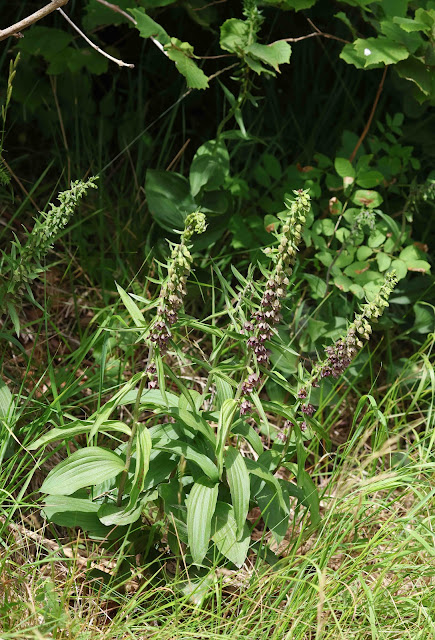




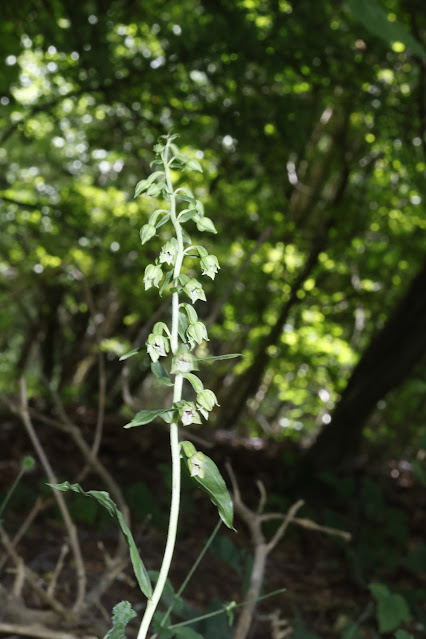





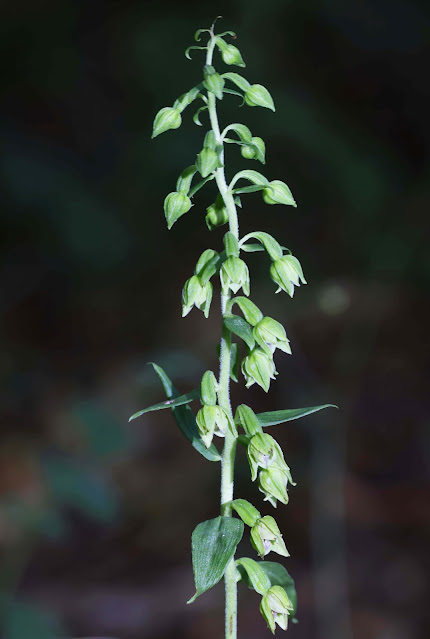

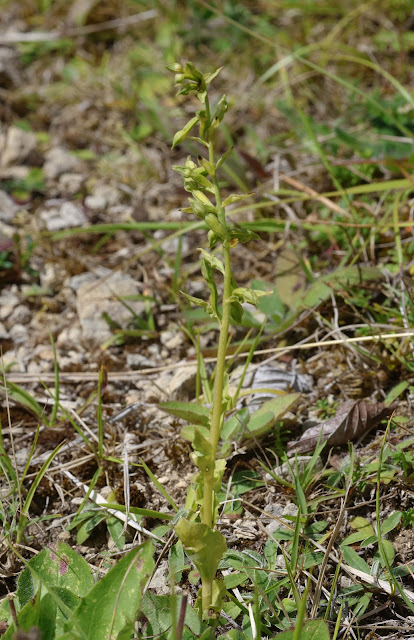




.jpg)
.jpg)
.jpg)
.jpg)









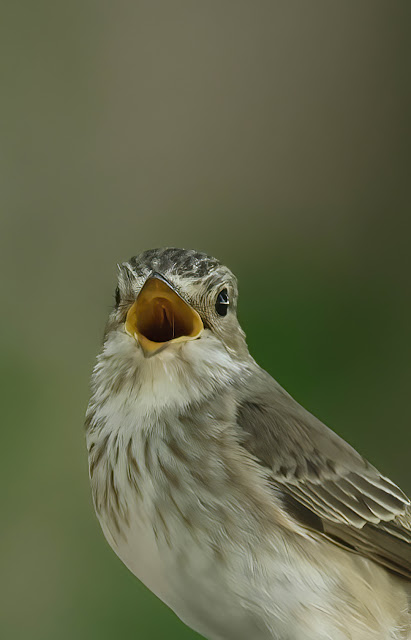
.jpg)






.jpg)

